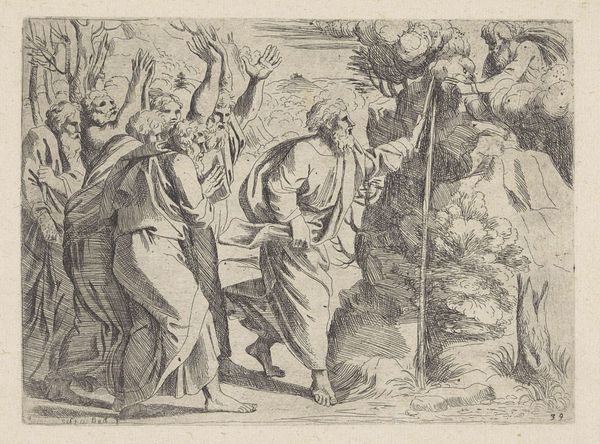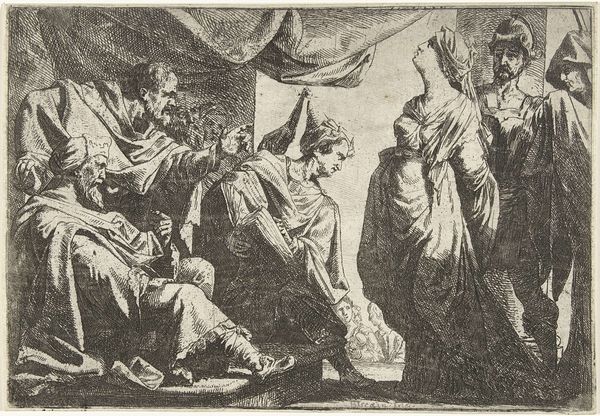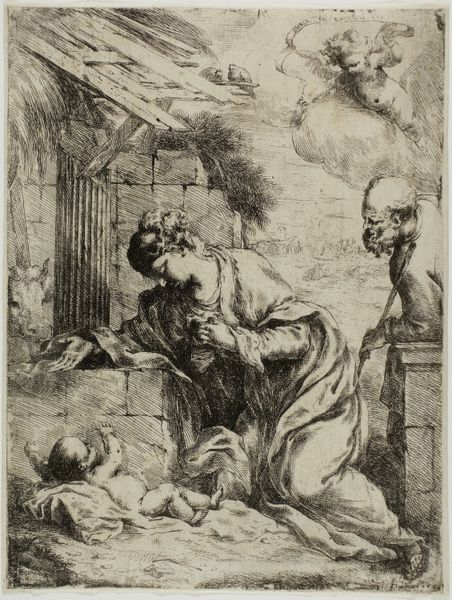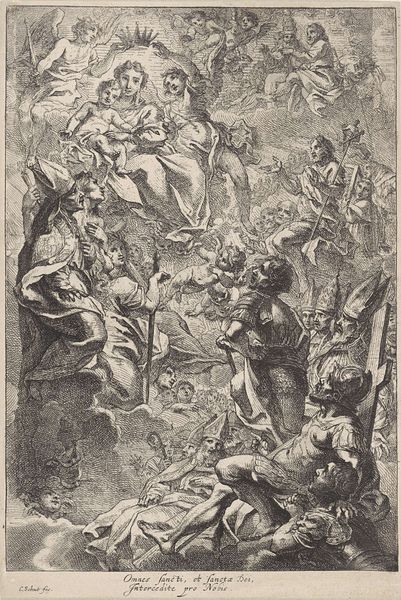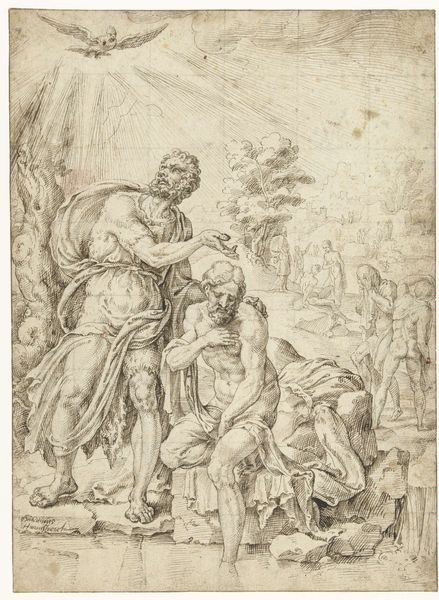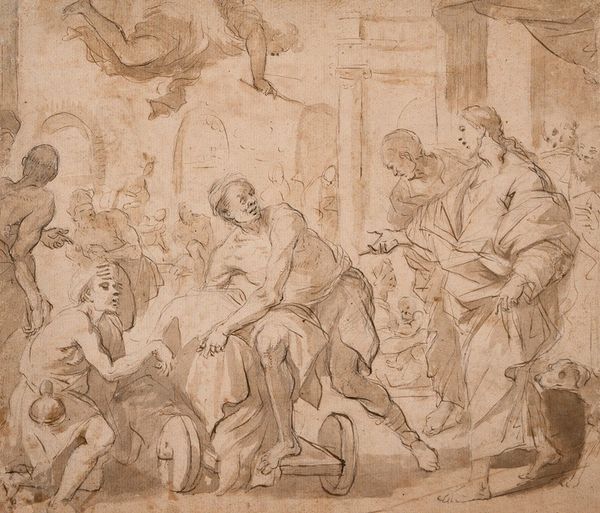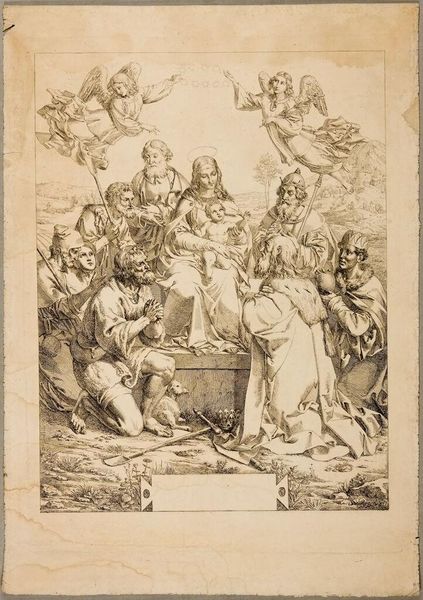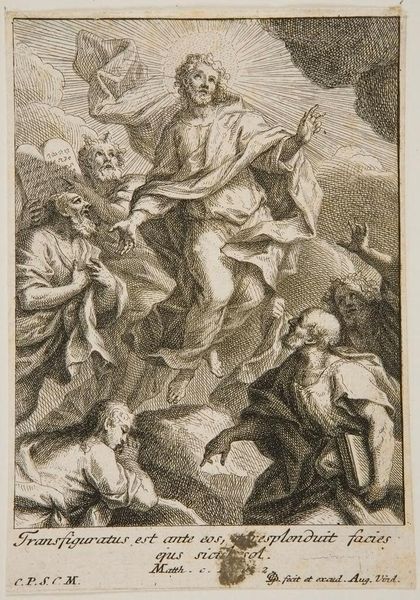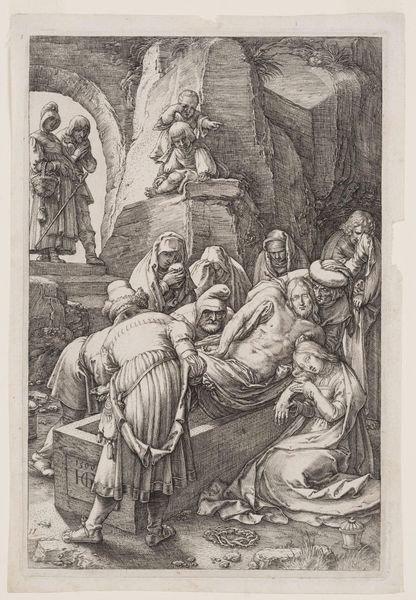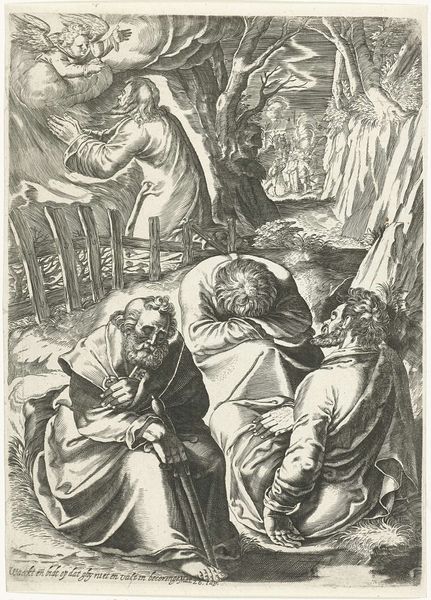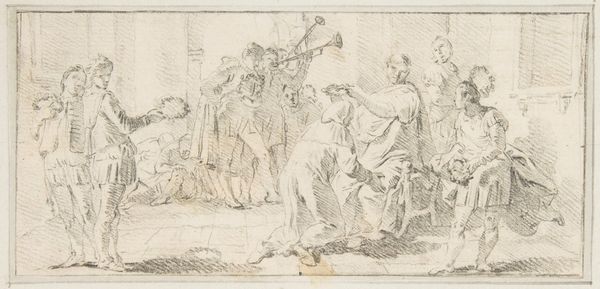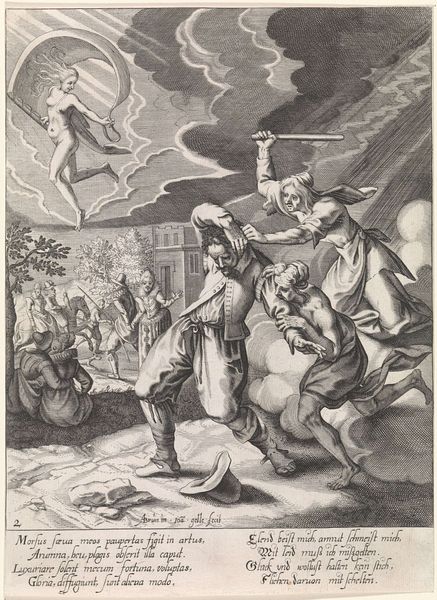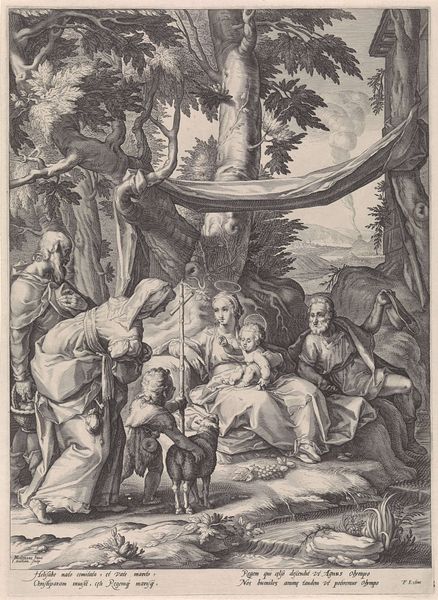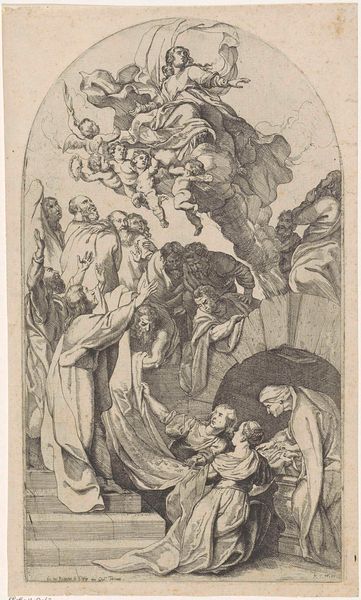
drawing, print, paper, ink, pencil, chalk
#
drawing
# print
#
pencil sketch
#
charcoal drawing
#
paper
#
ink
#
pencil drawing
#
pencil
#
chalk
#
history-painting
#
academic-art
Dimensions: 189 × 256 mm
Copyright: Public Domain
Editor: Here we have Alessandro Turchi's "Vision of Saint Catherine of Siena", a drawing made with ink, chalk and pencil on paper. It feels very dramatic and expressive. The figure of Saint Catherine looks so emotional! What’s your interpretation of the socio-political themes at play here? Curator: Well, looking at it through a historical lens, it's useful to understand the environment in which Turchi was working. This piece clearly caters to the demand for Counter-Reformation imagery. The Catholic Church sought to reassert its authority through emotionally charged scenes and clear messaging after the rise of Protestantism. Notice the inclusion of the symbols of mortality— the skull, the cross— alongside heavenly figures such as angels, a dove and Madonna with Child. How does their inclusion frame the message, would you say? Editor: It suggests earthly suffering can lead to heavenly rewards? I'm also wondering about how it would have been displayed at the time and for what purpose? Curator: Excellent question! Drawings such as these served a vital public function. While perhaps not always displayed publicly themselves, they could have been studies for larger paintings in churches. So it might have served as part of propaganda, of religious teachings in very visual ways, ensuring even the illiterate population can understand and empathize with the saint's experience and devotion. The strong emotional expression definitely serves that goal. Editor: So, it's both an artwork and a persuasive tool. I had never considered its public function quite so directly. Curator: Precisely! And it highlights how artistic production is never fully separate from the socio-political and religious forces that shape its creation and reception. The artist isn't working in a vacuum. It's fascinating to unpack how those forces manifested themselves in the final artwork. Editor: This definitely changes how I’ll look at historical art pieces from now on. It highlights the importance of considering social context.
Comments
No comments
Be the first to comment and join the conversation on the ultimate creative platform.
